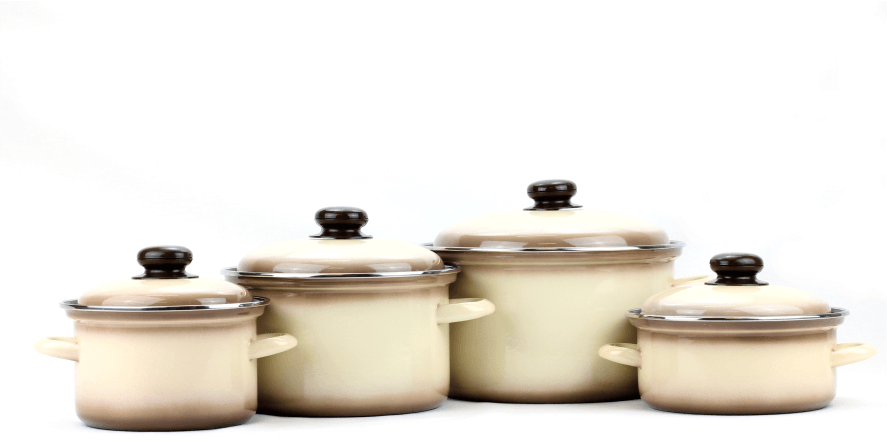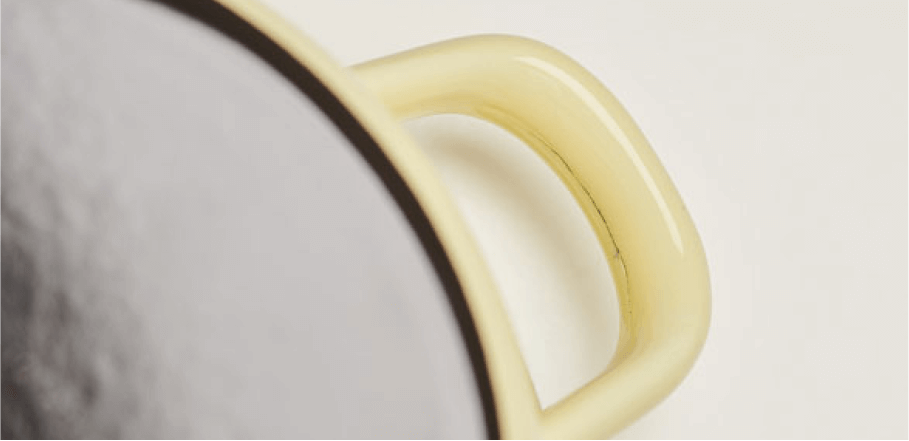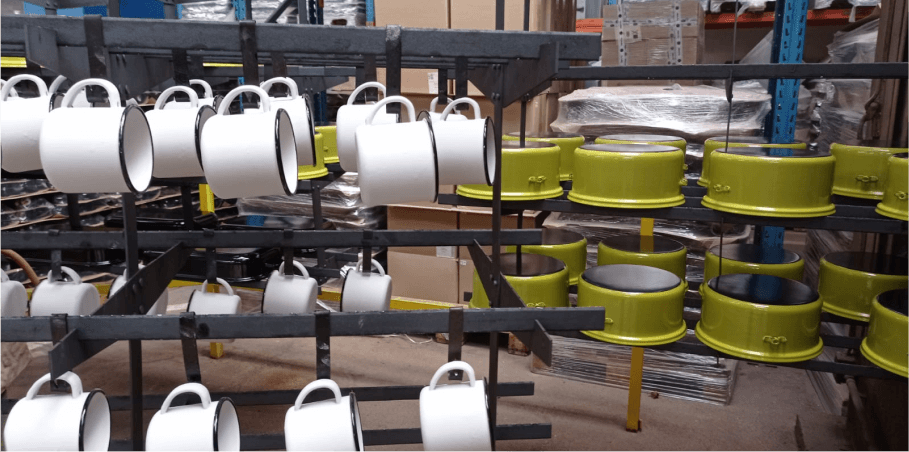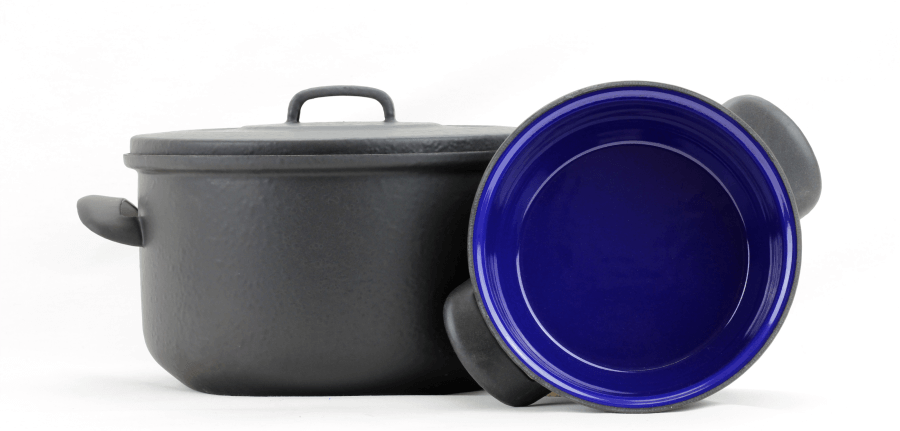ENAMELED DISHES
WE KNOW EVERYTHING THAT IS TO KNOW ABOUT THEM
Enamel is glass fused to metal at temperatures around 850 °C. This surface treatment gives enamel cookware a lot of incredible properties.

Advantages of enameled cookware
- Compatible with many sorts of stoves, including induction stovetops
- Dishwasher safe because of how easily its smooth surface cleans and how it inhibits bacterial growth
- Prevents the introduction of potentially dangerous compounds and allergens into food
- Safe for children and people prone to allergies
- Guarantees 100% health-safe cooking
- Distributes heat well, making cooking more energy-efficient
- Has a hard, non-porous, scratch-resistant surface
- When properly handled, it can last for generations.
- Recyclable in the same way as standard scrap metal
VISIT OUR ENAMELWARE E-SHOP
Each piece of our enamelware passes through the hands of dozens of people before it is finished. Since the enameling process involves a significant amount of handiwork, there may be small aesthetic differences in the dishes which are inherent to this traditional cookware design:
Color variations
Depending on the product type, the enamel is applied by either dipping or glazing. The enamel is applied two to three times, with the ground coat serving as the initial layer and all subsequent coats serving as opaque “cover” coats. Enamel is a natural material that responds to changes in temperature and humidity. Minimal color variations and little inconsistencies in the enamel application are the distinguishing features of this handmade production process.


Hollow handles
Our products are (depending on the model) covered with two to three layers of enamel: a ground enamel coat and colored “cover” enamel. The so-called “seam,” which is found on the interior of the hollow handles where the handle was welded to the item, is created as a result of the base enamel protruding slightly during the firing process.
Technological supporting points
The dishes are hung using hooks or placed on the tunnel kiln’s hanging trolleys.
Depending on the item, one or more tiny areas where the enamel was not able to adhere remain in places where the hooks/legs have been attached. We take care to position these support points in hardly visible areas.


Notching
For goods made of thicker steel (>2mm), the cutter’s profile remains visible on the open edge. “The pots’ placement on the firing knives does not obscure the bearing points’ visibility.” It is advised to occasionally grease the edges of these items with cooking oil.
Unevenness of enamel
Minor surface irregularities (frequently called “veins” in our industry) are caused by glazing, during which the enamel is unevenly spread over the surface of the product. This is a characteristic trait of mechanized enamel glazing.


Color variations
Depending on the product type, the enamel is applied by either dipping or glazing. The enamel is applied two to three times, with the ground coat serving as the initial layer and all subsequent coats serving as opaque “cover” coats. Enamel is a natural material that responds to changes in temperature and humidity. Minimal color variations and little inconsistencies in the enamel application are the distinguishing features of this handmade production process.

Hollow handles
Our products are (depending on the model) covered with two to three layers of enamel: a ground enamel coat and colored “cover” enamel. The so-called “seam,” which is found on the interior of the hollow handles where the handle was welded to the item, is created as a result of the base enamel protruding slightly during the firing process.

Technological supporting points
The dishes are hung using hooks or placed on the tunnel kiln’s hanging trolleys.
Depending on the item, one or more tiny areas where the enamel was not able to adhere remain in places where the hooks/legs have been attached. We take care to position these support points in hardly visible areas.

Notching
For goods made of thicker steel (>2mm), the cutter’s profile remains visible on the open edge. “The pots’ placement on the firing knives does not obscure the bearing points’ visibility.” It is advised to occasionally grease the edges of these items with cooking oil.

Unevenness of enamel
Minor surface irregularities (frequently called “veins” in our industry) are caused by glazing, during which the enamel is unevenly spread over the surface of the product. This is a characteristic trait of mechanized enamel glazing.

